Best SIM/eSIM Card Options for Europe – Where to Buy
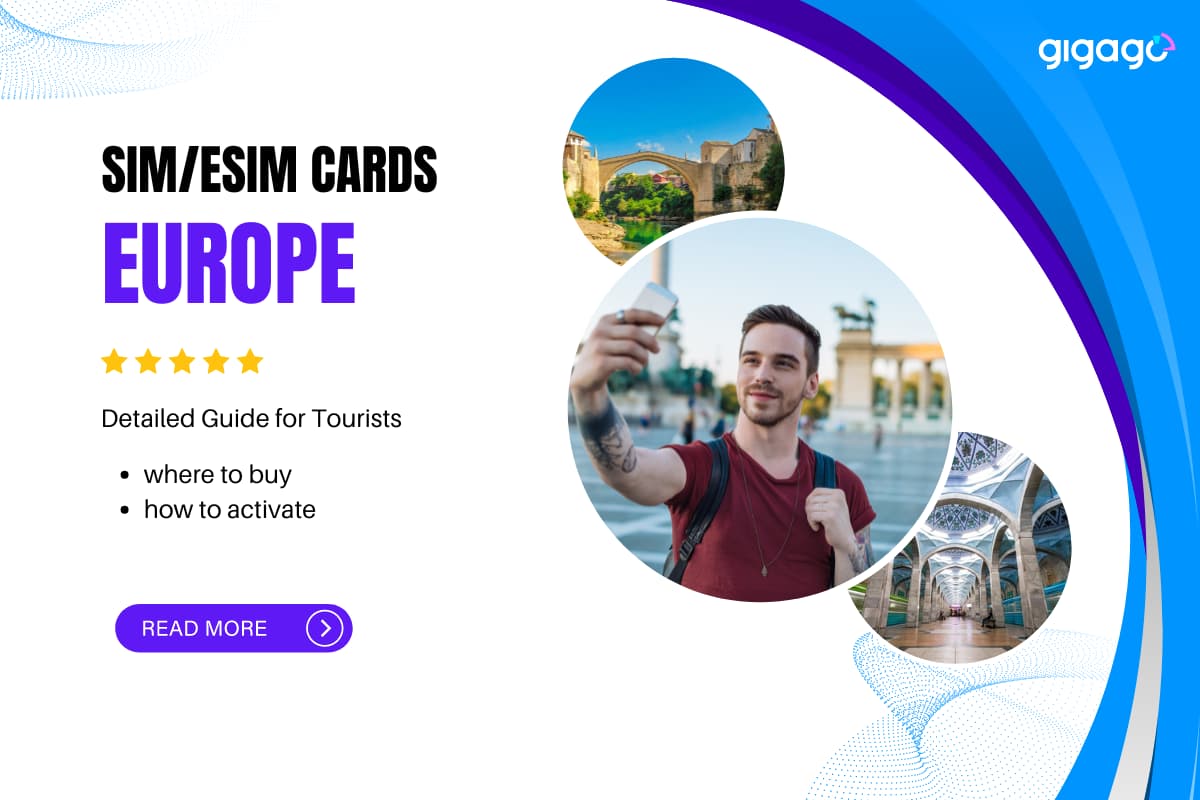
SIM card in Europe – Where to buy
I. Will my phone work in Europe?
Yes.
Most modern smartphones are designed to work globally and connect to various networks. However, you need to make sure your phone supports GSM (Global System for Mobile Communications), the standard used by most European carriers.
It’s always best to double-check a few things before you go:
1. GSM Compatibility: Europe uses a technology called GSM for its mobile networks. Most phones these days are GSM compatible, but it’s worth confirming. You can usually find this information in your phone’s settings or by doing a quick online search for your phone model and “GSM compatibility.”
2. Unlocking Your Phone: If you bought your phone through a carrier, it might be “locked” to that carrier’s network. This means you can only use their SIM card. To use a European SIM card, you’ll need to unlock your phone. Contact your carrier before your trip to see what their unlocking policy is.
3. Country-Specific Regulations: While most of Europe has harmonized its mobile regulations, some countries might have unique requirements or different roaming charges. It’s a good idea to check with your carrier about the specific countries you’ll be visiting and if there are any extra steps you need to take.
By taking a few minutes to check these things, you can ensure a smooth and connected trip to Europe!
II. Can my local carrier’s mobile data plan work in Europe?
It depends on your carrier and the specific plan you have. However, using your regular phone plan in another country (called “roaming”) can cost A LOT of money.
Here are some cheaper and easier options:
1. Talk to your phone company: They might have special travel plans or deals for using your phone in Europe.
2. Get a SIM card when you arrive: This gives you a local phone number and data plan, and it’s usually the cheapest way to stay connected.
3. See if your phone uses eSIMs: eSIMs let you activate a data plan online before you even leave home.
III. SIM Card – cheapest but the best way to stay connected on the go in Europe
Using a SIM card is the smartest way to use your phone in Europe without getting hit with crazy roaming charges from your home phone company.
Here’s what you need to know:
Why SIM Cards Are Awesome:
- Save Money: SIM cards give you local phone and data rates, which are WAY cheaper than roaming.
- Easy Calls: You get a European phone number, so it’s easy for people there to call or text you.
- Stay Online: Enjoy fast and reliable internet access for maps, social media, and everything else!
Physical SIM vs. eSIM – What’s the Difference?
| Feature | Physical SIM | eSIM |
| Meaning | A small card you put into your phone. | A digital SIM already built into your phone. |
| Where to Buy? | Airports, phone stores, some convenience stores | Online from companies like Gigago |
| Pros | Works with most phones, easy to swap out | No need to handle a physical card, switch plans online |
| Cons | Can be a hassle if you have a dual-SIM phone | Not all phones have eSIM technology yet |
Top Recommendation: Gigago
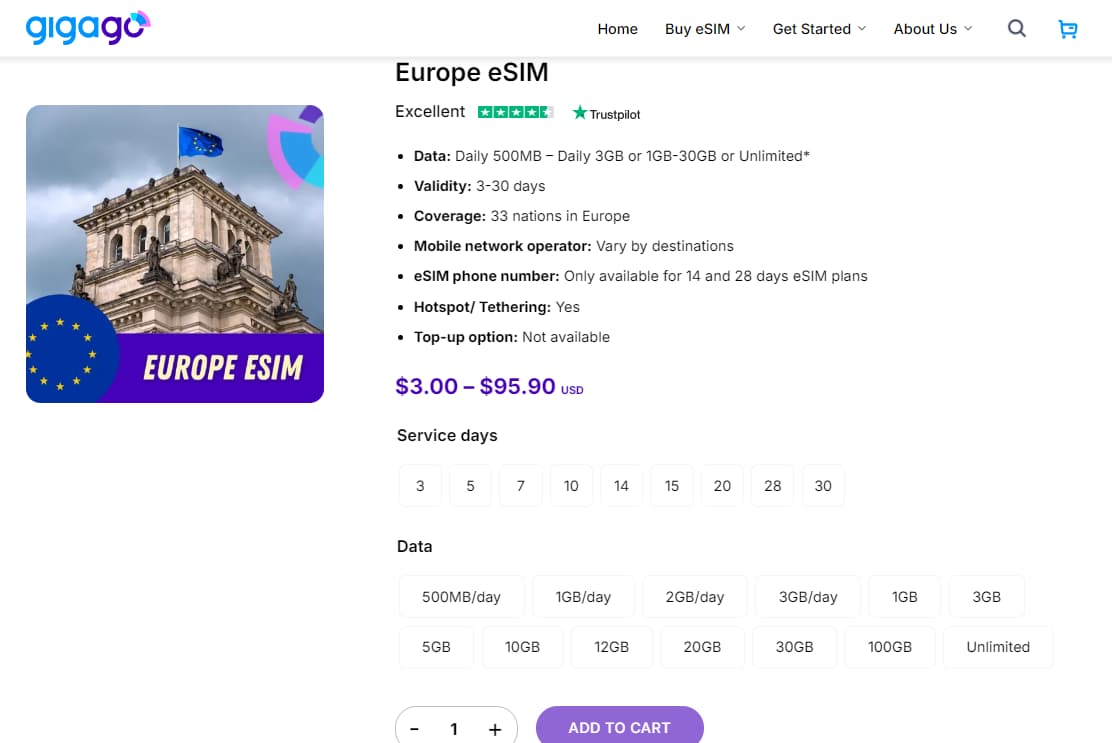
Buying Europe eSIM by Gigago
One provider that stands out for European travel is Gigago. Here’s why:
- Easy eSIM Setup: Ditch the hassle of finding a physical SIM card store. With Gigago’s eSIM, you can activate your plan online before you even leave for your trip and be connected the moment you land.
- Flexible Plans: Choose the data amount that perfectly matches your trip length and how much you’ll be using your phone.
- Wide Coverage: Traveling to multiple countries in Europe? No problem! Gigago works across the continent, so you’re likely covered wherever you go.
Other Good Options:
- Holafly: Holafly also focuses on eSIMs for travel, with plans specifically designed for Europe.
- Airalo: Another popular eSIM provider with coverage in many countries.
Important Tip: Before relying on an eSIM, double-check that your phone supports them! You can usually find this information in your phone’s settings.
If you’re looking for an Europe eSIM, Gigago offers a variety of options to keep you connected during your trip.
IV. Where to buy SIM card/eSIM for Europe?
Finding a SIM card or eSIM for Europe is relatively straightforward, thanks to various purchasing options available to travelers.
1. Buying at the airports
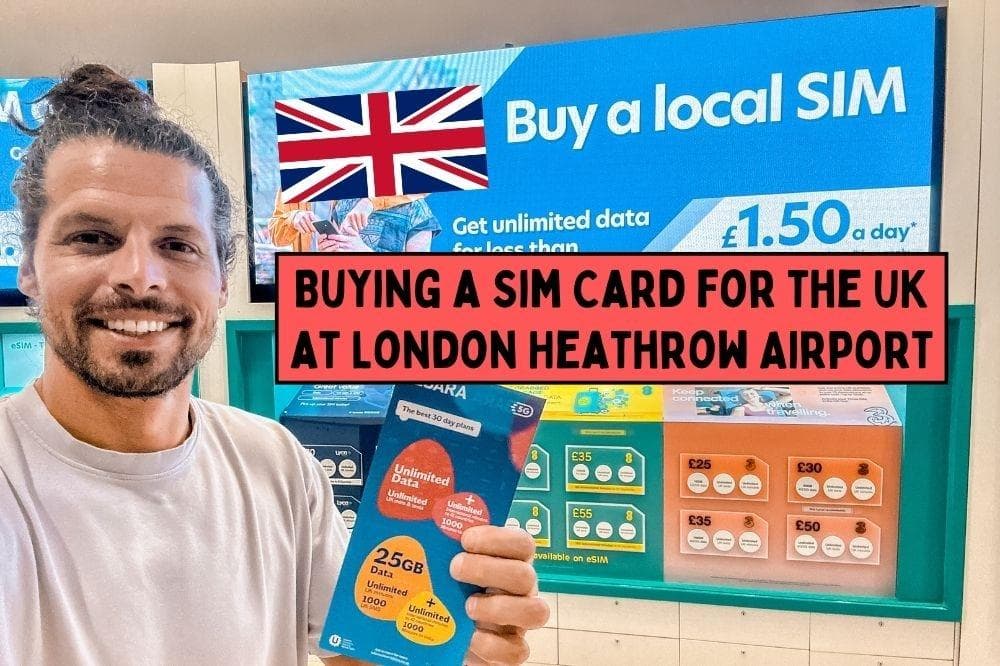
You can buy Europe SIM card at the airports
- Easy to Find: Most big airports in Europe (like Heathrow in London, Charles de Gaulle in Paris, or Fiumicino in Rome) have kiosks or stores selling SIM cards from different phone companies. Look for signs that say “SIM cards” or “mobile services.”
- Not Always the Cheapest: You might pay a little more to buy a SIM card at the airport compared to other places.
2. Buying in the Cities
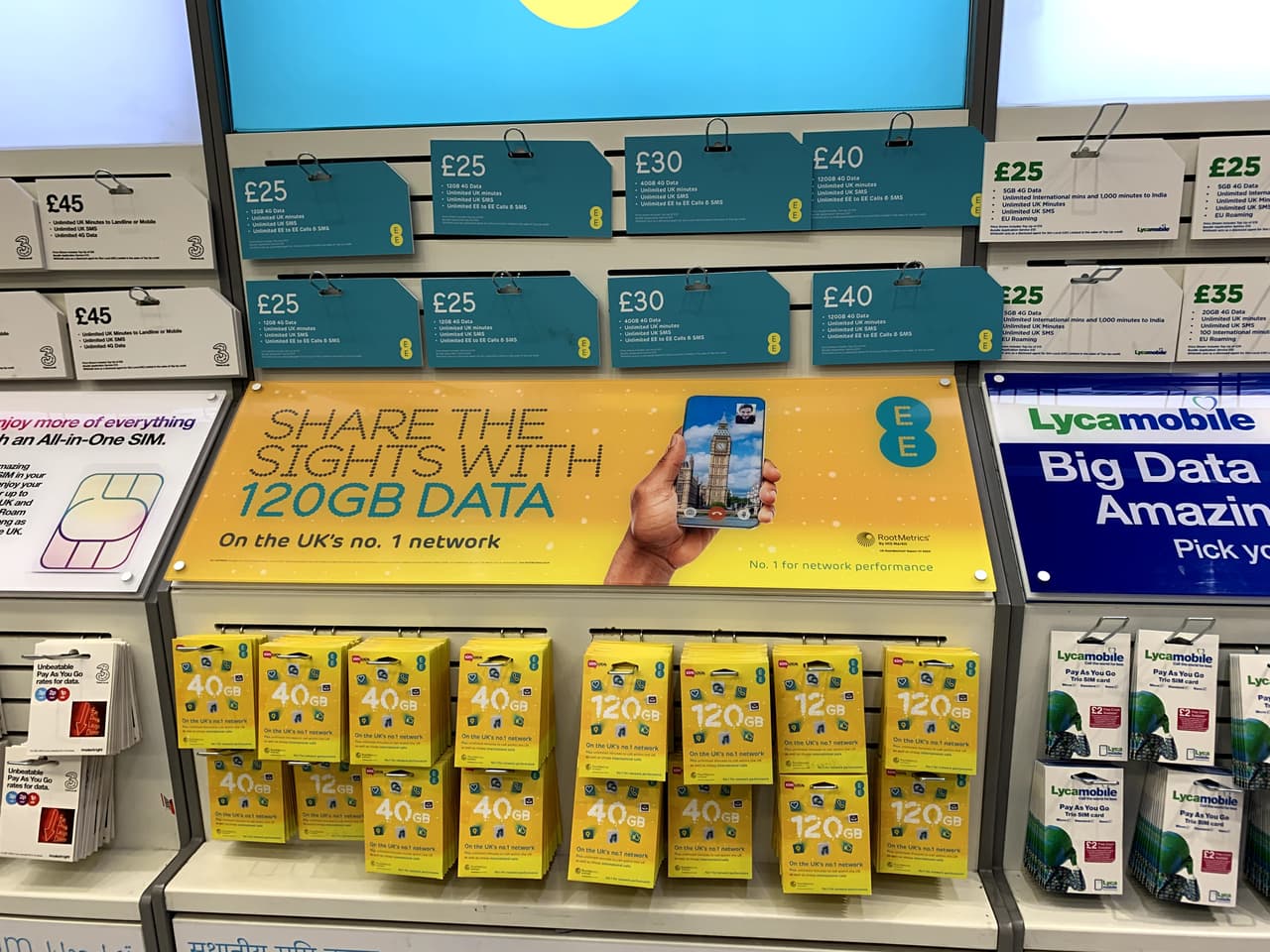
Buying Europe SIM card in the city center is very simple
- Phone Company Stores: Go to a store run by a phone company like Vodafone, Orange, or T-Mobile. They usually have the best prices and can answer any questions you have.
- Electronics Stores: Stores like MediaMarkt or Fnac (in some countries) also sell SIM cards.
- Convenience Stores: Sometimes you can find SIM cards at places like supermarkets or even newsstands, but they might not have as many choices.
3. Buying SIM/eSIM Online
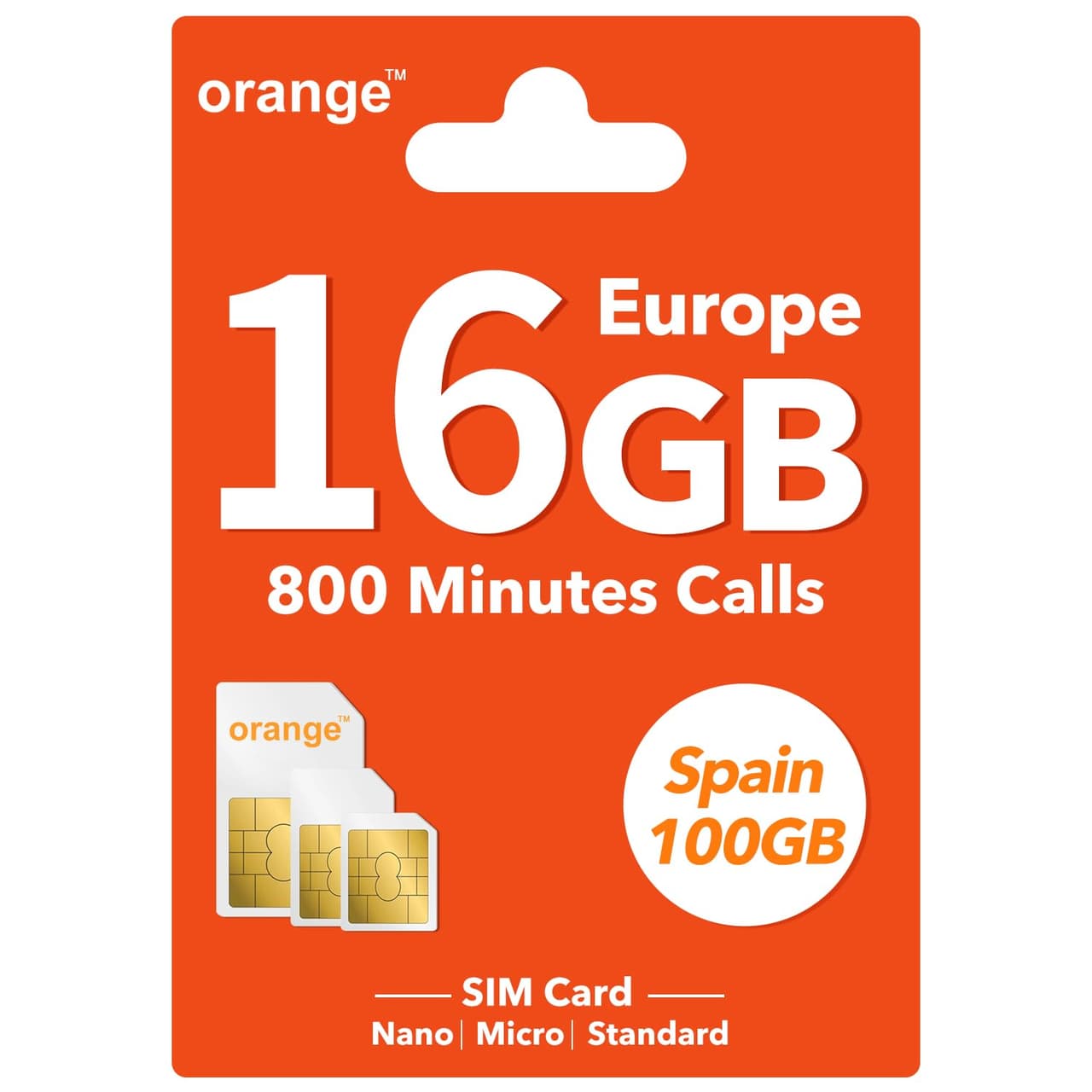
Buying SIM card online is very convenient
Websites and Apps: Companies like Airalo, Holafly, and GigSky let you buy an eSIM online. An eSIM is like a digital SIM card, so you don’t need a physical one mailed to you.
Easy to activate: You usually just scan a code with your phone to activate the eSIM when you arrive in Europe.
Important Tips:
- Passport: You’ll usually need your passport to buy a SIM card in Europe.
- Plan Choice: Phone companies offer different plans with varying amounts of data, so think about how much you’ll need.
- Ask Questions: Don’t be afraid to ask store staff for help choosing the right SIM card or plan!
V. How to activate SIM /eSIM card after purchase?
Activating your SIM or eSIM card is a simple process, but it varies slightly depending on the type of card you have purchased.
1. Activating a Physical SIM Card
- Insert the SIM Card: Locate the SIM card tray on your phone, usually found on the side. Use a SIM eject tool or a paperclip to open the tray and insert the new SIM card.
- Restart Your Phone: After inserting the SIM card, restart your phone to allow it to recognize the new network.
- Follow Activation Instructions: Depending on the carrier, you may receive activation instructions via SMS or email. Follow these steps to complete the activation process.
2. Activating an eSIM Card
- Scan the QR Code: When you purchase an eSIM, the provider will typically send you a QR code. Open your phone’s settings, navigate to the cellular or mobile data section, and select “Add Cellular Plan.” Use your camera to scan the QR code.
- Label Your Plan: Once the eSIM is recognized, you can label it for easy identification (e.g., “Europe Data Plan”).
- Set Default Line: If you have multiple plans, choose which line you want to use as your default for calls and data.
If you encounter any issues during the activation process, double-check that your phone is unlocked on compatible list with the new SIM or eSIM. You can also contact the carrier’s customer support for assistance.
You can also activate an eSIM card with installation guide through Gigago website.
VI. More tips for using phones and SIM cards in Europe
Staying connected in Europe goes beyond just having a SIM card. Here are some additional tips to enhance your mobile experience while traveling.
- Download Offline Maps: Before you leave, download offline maps of the cities and areas you’ll be visiting. Apps like Google Maps and Citymapper let you use navigation features without using any data. This is especially helpful when exploring remote areas or if you have limited connectivity.
- Use Wi-Fi Whenever Possible: To conserve your mobile data, take advantage of free Wi-Fi, which is widely available in cafes, restaurants, hotels, and public spaces throughout Europe. Many cities even offer free public Wi-Fi networks.
- Monitor Your Data Usage: Keep an eye on how much data you’re using to avoid going over your plan’s limits and incurring extra charges. Most smartphones have built-in data tracking features that let you set alerts when you’re close to your data cap. Also, consider disabling background data for apps that use a lot of data, like video streaming services.
- Consider Local Apps: Familiarize yourself with local apps that can enhance your travel experience. For example, transportation apps like Uber or Bolt can help you get around cities easily and often have local payment options. Language translation apps can also be incredibly useful for overcoming language barriers.
VII. FAQs
- Can I use my existing SIM card in Europe?
Yes, you can use your existing SIM card in Europe, but you may incur high roaming fees. It’s advisable to check with your carrier about international roaming options and costs. - What is the difference between a SIM card and an eSIM?
A SIM card is a physical card that you insert into your phone, while an eSIM is a digital SIM embedded in your device. eSIMs allow for easier switching between carriers and plans without needing to change physical cards. - Are there any restrictions on using SIM cards in Europe?
While most travelers can use SIM cards without restrictions, some countries may have specific regulations regarding registration or identification requirements. It’s essential to familiarize yourself with local laws before purchasing a SIM card. - How do I know if my phone is unlocked?
You can check if your phone is unlocked by inserting a SIM card from a different carrier. If your phone recognizes the new SIM and connects to the network, it is likely unlocked. Alternatively, you can contact your carrier for confirmation.
VIII. Conclusions
Staying connected in Europe is easy with the right SIM card. Whether you prefer a physical SIM or the convenience of an eSIM, research your options and compare plans to find the best fit for your trip. Then relax and enjoy your travels, knowing you’ll stay connected without breaking the bank!

